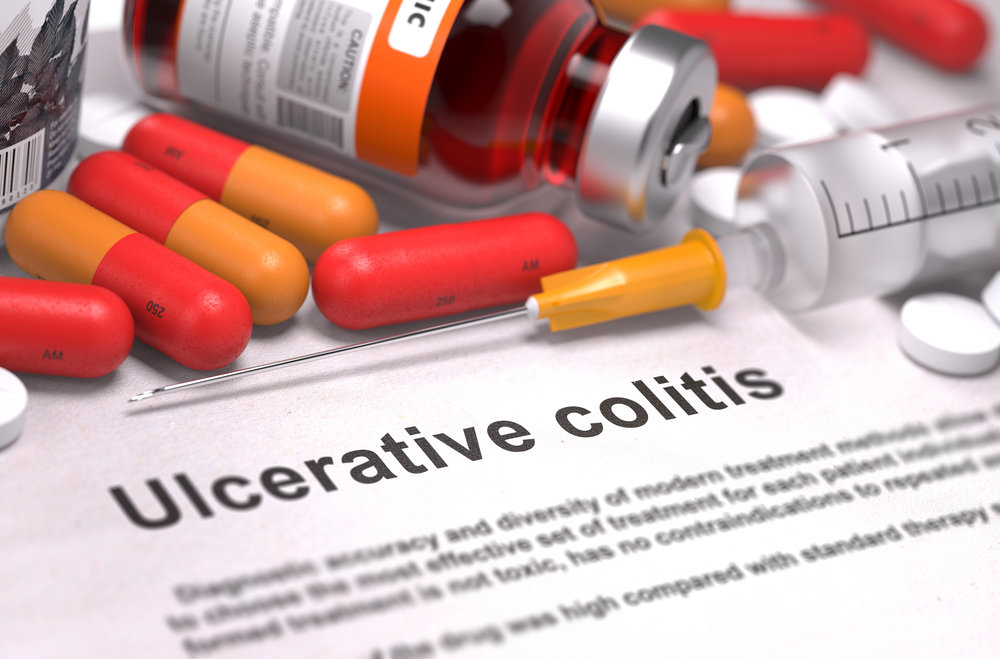
Celgene, a wholly owned subsidiary of Celgene Corporation, announced that data from the open-label extension of the TOUCHSTONE phase 2 clinical trial of ozanimod in patients with moderate to severe ulcerative colitis are to be presented at the United European Gastroenterology Week (UEGW) in Vienna, Austria and at the American College of Gastroenterology (ACG) Annual Scientific Meeting in Las Vegas. Ozanimod is an investigational selective S1P 1 and 5 receptor modulator.
“Since ulcerative colitis is a chronic condition, patients are looking for treatments that can help them over the long term,” said Dr. William Sandborn, M.D., Professor of Medicine and Chief, Division of Gastroenterology and Director, University of California San Diego Inflammatory Bowel Disease Center. “These encouraging findings suggest that continued treatment with ozanimod shows evidence of durable efficacy with an acceptable safety profile.”
TOUCHSTONE evaluated the efficacy and safety of 0.5 mg and 1 mg doses of ozanimod compared with placebo after eight weeks of treatment (induction phase) in 197 patients with moderate to severe active ulcerative colitis. Patients who achieved a clinical response at week 8 continued with their original treatment through week 32 in a maintenance phase. The primary endpoint was the proportion of patients in remission at week 8. Secondary endpoints were: the proportion of patients achieving a clinical response, the proportion of patients with mucosal improvement and the change from baseline in Mayo score. Previously reported results showed TOUCHSTONE met its primary endpoint and secondary endpoints with statistical significance for patients on the 1 mg dose of ozanimod versus placebo.
TOUCHSTONE participants in all three treatment arms entered the open-label extension if they did not respond to treatment after the induction phase, relapsed during the maintenance phase or completed the maintenance phase (170 of the 197 patients). The objective of the open-label extension phase is to evaluate the long-term efficacy and safety of daily ozanimod 1 mg.
During the extension period, treatment with ozanimod 1 mg resulted in a decrease in mean partial Mayo Score (pMS) in all treatment arms. For patients who had been treated with ozanimod 0.5 mg during the double-blind portion of the study and were switched to ozanimod 1 mg for the extension phase of the study, mean pMS score decreased from 4.5 at entry into the extension period to 1.7 at week 44. For patients who had been initially treated with ozanimod 1 mg and stayed on ozanimod 1 mg for the extension phase of the study, mean pMS score decreased from 3.3 at entry into the extension period to 1.9 at week 44. For patients who had been initially treated with placebo and were switched to ozanimod 1 mg for the extension phase of the study, mean pMS score decreased from 4.6 at entry into the extension period to 1.7 at week 44.
Treatment with ozanimod 1 mg in the extension phase also showed a decrease in the proportion of patients with rectal bleeding and moderate or severe diarrhea.
During the safety follow-up in the extension phase, which ranged from 44 weeks to over two years, the most common adverse events (>2.0 percent) noted in the extension period were ulcerative colitis flare (5.9 percent), upper respiratory tract infection (4.1 percent), anemia (3.5 percent), nasopharyngitis (3.5 percent), transaminase elevation (3.5 percent), back pain (2.9 percent), arthralgia (2.4 percent) and headache (2.4 percent). No notable cardiac, ophthalmologic or infectious TEAEs were observed.
Serious adverse events occurred in 16 of 170 patients (9.4 percent). Serious AEs occurring in two or more patients were anemia (1.2 percent) and ulcerative colitis flare (2.4 percent).
Alanine aminotransferase and aspartate aminotransferase elevations more than three times the upper limit of normal occurred in 4 of 170 patients (2.4 percent); all elevations were asymptomatic, less than five times the upper limit of normal, transient and resolving during ongoing treatment.
“Findings from this extension study at week 44 showed improvements in efficacy measures for patients who took ozanimod throughout both the blinded study and the extension,” said Scott Smith, President, Celgene Inflammation & Immunology. “We recognize the strong need for innovative treatments that help patients with inflammatory bowel disease achieve durable results. We are committed to advancing additional transformational oral treatment options for these patients.”
Filed Under: Drug Discovery




